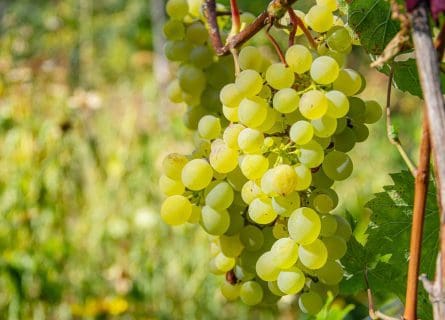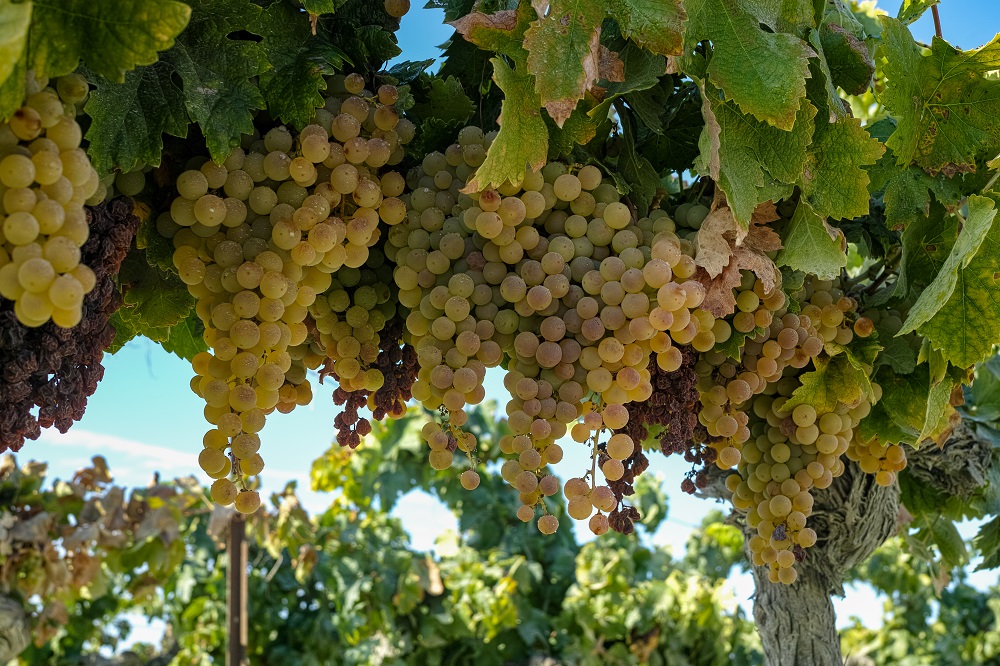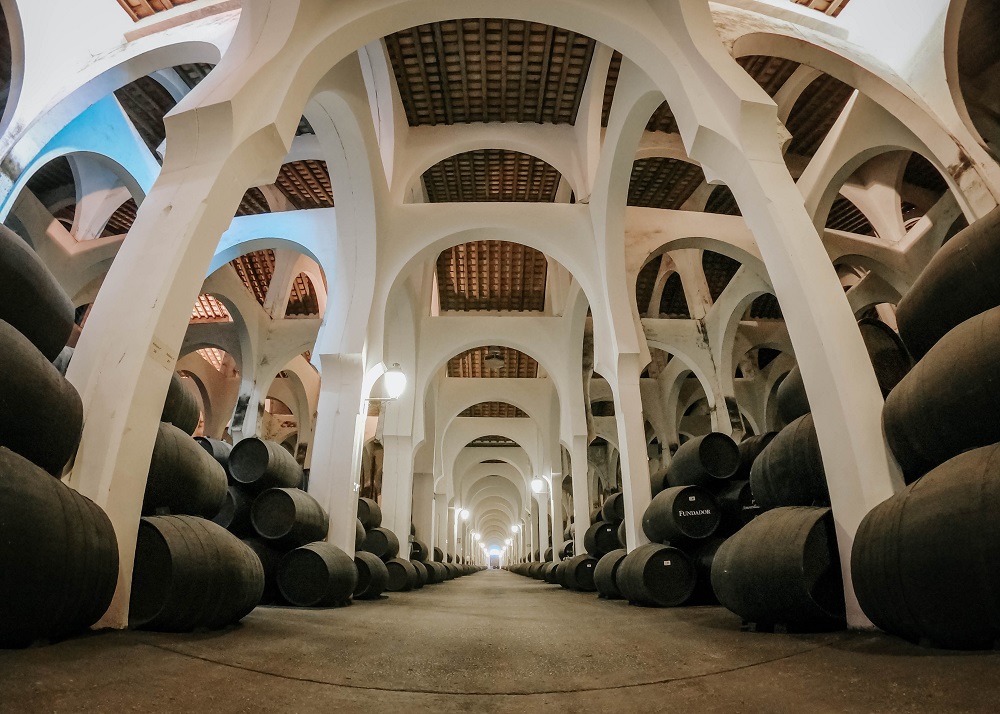
Semillon Grape Variety: Going Solo
October 17, 2022
Explore the allure of the Semillon grape & its legendary connection to Sauternes. Unveil the history & flavors of this captivating varietal. Cheers!
By: James lawrence / Last updated: February 3, 2025
Estimated reading time: 9 minutes
Sherry is the ultimate paradox of Spanish fine wine. It is an iconic and world-renowned style that relies upon and indeed requires second-rate raw materials. Therefore, the criteria for inclusion are strict:

Guide to Spanish Wine Grape Varietals: Read more
Palomino is such a grape variety. Grown in the Andalucia region for centuries, the white grape is an essential component in the various interpretations of dry sherry, from fino to oloroso. Unlike many categories of wine, sherry derives its nuance and inimitable taste profile from a series of complex winemaking steps rather than simply the varietal character of one grape. There is no doubt that Palomino would struggle to yield high-quality and memorable table wine, regardless of the terroir. But Palomino’s role in cementing the building blocks of all great sherry cannot be overestimated.
The Andalusians are proud, with a long list of cultural riches to their name. Architecture lovers always swoon over Seville and Granada, while history buffs find endless fascination in the region’s Moorish past. But it is food and drink lovers who really struggle to return home. Sipping chilled fino sherry, served alongside a selection of fresh tapas, is one of life’s most pleasurable experiences. For this reason, we should thank the Palomino grape, the single most important base element in the sherry equation.
It is widely believed that Palomino has grown in Andalucia for many centuries, although there is disagreement about the variety’s origins. While certain viticulturists argue that it is indigenous to the region, there is some evidence that Palomino was imported. Greek merchants used to trade heavily in southern Spain, bringing numerous species of Vitis Vinifera into the western Mediterranean. As the variety is currently found in Cyprus, it is supposed that Palomino may have mutated from an indigenous Greek variety. According to wine historians, the grape became popular in Portugal and northern Spain during the Middle Ages due to its willingness to produce a large crop.
Legend also tells of how Palomino was bestowed its name. In the 13th century, the Castilian king Alfonso X waged a successful war against the Moorish kingdoms of southern Spain, driving their armies into retreat. After taking the regional capital of Jerez de la Frontera, Alfonso worked hard to promote the wines of sherry, spreading their renown in important markets like England and the Low Countries. One of Alfonso’s most revered knights was called Fernan Yáñez Palomino. It is said that the grape owes its nomenclature to this man.
It’s an apt tale – the region has been skilled at building relationships with Europe’s great and good, either by accident or design. In the 16th century, English forces attacked the Andalucian port of Cadiz, appropriating several sherry casks. They were given to the reigning monarch, Elizabeth 1st, who promptly made Sherry the star of her court! This longstanding fondness for the drink encouraged several wealthy British and Irish families to emigrate to Jerez in the 1800s, investing in the region and opening famous sherry houses like Williams & Humbert and Garvey.
Then phylloxera arrived, and all bets were off. The louse devastated vineyards throughout Western Europe, reaching Spain in the late 19th century. Yet the epidemic was responsible for improving Palomino’s status in the vineyards of Jerez. When the re-grafting program was initiated (American rootstock is immune to the pest’s deadly bite), Palomino was favored above all other white varieties. This is for two reasons: the variety offers a generous yield and responds well to being grafted onto non-European rootstock.
Nevertheless, due to falling demand, the area under vine has declined to about 6,000 hectares today, planted in the so-called Sherry Triangle. This is a landmass encompassing Jerez de la Frontera, El Puerto de Santa Maria, and Sanlúcar de Barrameda. Palomino is also found in Castilla y Leon (about 4,800 hectares) and Galicia. Palomino vineyards are also in Portugal, France, the Canary Islands, California, and even Australia.
The attraction is not difficult to understand – Palomino is a very forgiving grape variety. It is the obvious choice if a winemaker seeks to produce high-quality fortified wine or grape-based spirit. Vines can be relied upon to grow large conical bunches laden with ripe fruit in the vast majority of years. Moreover, Palomino tends to deliver a regular yield and uniform crop unless the vintage is particularly challenging. It thrives in calcareous terroir, the mainstay of vineyards in the Sherry Triangle. And, unlike with Tempranillo Blanco and Xarel-lo, coulure and millerandage occur very infrequently.
Does this all sound too good to be true? In that case, we should add that no grape variety delivers a flawless performance year in and year out. Palomino can develop rot if there is excessive humidity – it is also susceptible to Peronospora and Anthracnose. In very hot years, when irrigation is employed, vines are liable to yield inflated berries, which can be an undesirable characteristic even in the production of fortified wine. Excessively high bunch crops can mean very dilute wine and lackluster sherry. The secret to success, as ever, is moderation.
Visiting a sherry bodega is one of wine’s greatest pleasures. Anyone who has stood in a courtyard sipping fino taken straight from the cask will tell you the same: fino sherry is a magical drink, a curious combination of relatively high alcohol (about 16.5% ABV) and silky delicacy – a wine style that refreshes the palate like no other. Tapas turn the experience into a veritable gastronomic paradise. And yet, the building blocks of sherry could almost be described as ignoble. So, how does the winemaker turn these indifferent raw materials into a thing of beauty?
Short answer: with skill, experience, and a great deal of patience! Traditionally, the freshly harvested Palomino grapes would be subject to foot-stomping in concrete baths (Lagares), although this has been largely abandoned in favor of mechanical cylindrical presses. Interestingly, the rules of the sherry Consejo Regulador (ruling council) allow only 70% of the potential juice to be pressed from the grapes to make sherry. The rest is discarded or used to make spirits and vinegar.
Fermentation can then begin. Bodegas used to prefer concrete or oak vats for fermentation; however, many houses are increasingly adopting stainless steel. The initial fermentation typically occurs rapidly, followed by a slower secondary fermentation used to develop a range of organic compounds. After fermentation, the winemaker will taste numerous samples, deciding which wines are suitable for making a particular style of sherry. The four principal categories are fino, amontillado, manzanilla and oloroso. They are all wonderfully unique.
A Comprehensive Guide to Sherry Wine: Read more
Solera maturation
After the winemaker has completed their classification, fortification will take place. Fino wines are normally fortified to 15.5 degrees (the optimum level to produce flor), while olorosos are fortified to about 18 ABV. At this point, the wines may be put in a criadera (Spanish for nursery) or young wine reserve before they are aged via the solera system. This is when the magic starts to occur with the unique Solera aging system
The Solera system is a fascinating part of Sherry’s longstanding wine culture. It ensures consistency of style and quality by blending young wines with mature examples over three to four years. A series of barrels are stacked on top of each other—the oldest is at floor level, with young wines stored at the top (there are usually four levels).
You can discover more about this system here in our – Comprehensive Guide to Sherry

In 2016, one of Sherry’s most important stakeholders, Beltran Domecq, confessed. He was asked why Sherry had lost so much market share over the past 20 years – particularly in once buoyant and appreciative destinations like the UK. “I think the main culprit was our business model in the 1970s and 80s when the vineyard surface area in sherry tripled, production quadrupled, and prices plummeted; there were almost no quality controls in place, and the market was swamped with poor quality products,” said Domecq.
“Yet, I feel our business model is now returning to the days of the 1960s, with offer and demand now more or less in balance.“
Is this optimism justified? Any visitor to the region today could scarcely believe that this iconic style has been struggling of late. The vineyards of the famous Sherry Triangle, situated between Cadiz and glorious Seville, offer timeless and captivating beauty. Grapes planted on chalky soils (known locally as albariza) are transformed into one of the world’s greatest fortified wines – simultaneously racy and yet unbelievably fine and complex. From the olive and nutty aromas of fino to the fig and plum richness of oloroso, there is a sherry for every occasion.
Furthermore, Jerez and Sanlucar de Barrameda are a paradise for discerning visitors. They are every bit the Andalucian dream: guitars, flamenco dancers, whitewashed patios, and nightlife that begins at 1 am. With such a potent marketing pitch, you might imagine that sherry continues to fly off the shelves.
Unfortunately, the reality is quite different. Jerez de la Frontera has been at the heart of Andalucia’s wine industry for over 2000 years, but that fact has not prevented a significant decline in the vineyard acreage. Indeed, while there were over 23,000 hectares planted in the early 1990s, that figure slumped to under 7,000 hectares in 2022. Moreover, most younger consumers are seemingly aloof to sherry’s charms, while the category faces massive global competition from trendy categories like Prosecco and New Zealand Sauvignon Blanc. To be blunt, Sherry has never faced such obstacles.
But the industry has not given up. Far from it – recent years have seen the emergence of dynamic new bodegas, while funky labels and influencer-led marketing campaigns are helping to win over Millennial drinkers. In 2022, the promotional body ‘Sherry from Spain’ launched a new global campaign to attract new customers and showcase the quality of sherry wines. In addition, the category’s suitability for cocktail-making has been widely discussed, with hip bartenders continually being wooed by the finest producers.
Ultimately, however, sherry’s greatest asset is its ability to pair well with an astonishing variety of dishes and cuisines. As Beltran Domecq wisely observed: “We must continue to build relationships with leading chefs and sommeliers, who value sherry and can help to communicate its virtues to their customers. Sherry may have an image – but a not quality problem – but Spanish cuisine can do no wrong.” The road ahead will not be easy, and the stakes are undeniably high. Yet a concerted effort can bring a new generation of wine lovers into the fold. If Sherry can’t do it, no one can.
If you would like us to customize an exclusive luxury tour, contact us and let us know your travel plans. We offer luxury food and wine tours for private groups of a minimum two guests. In addition, all of our private, chauffeured tours are available year-round upon request.

